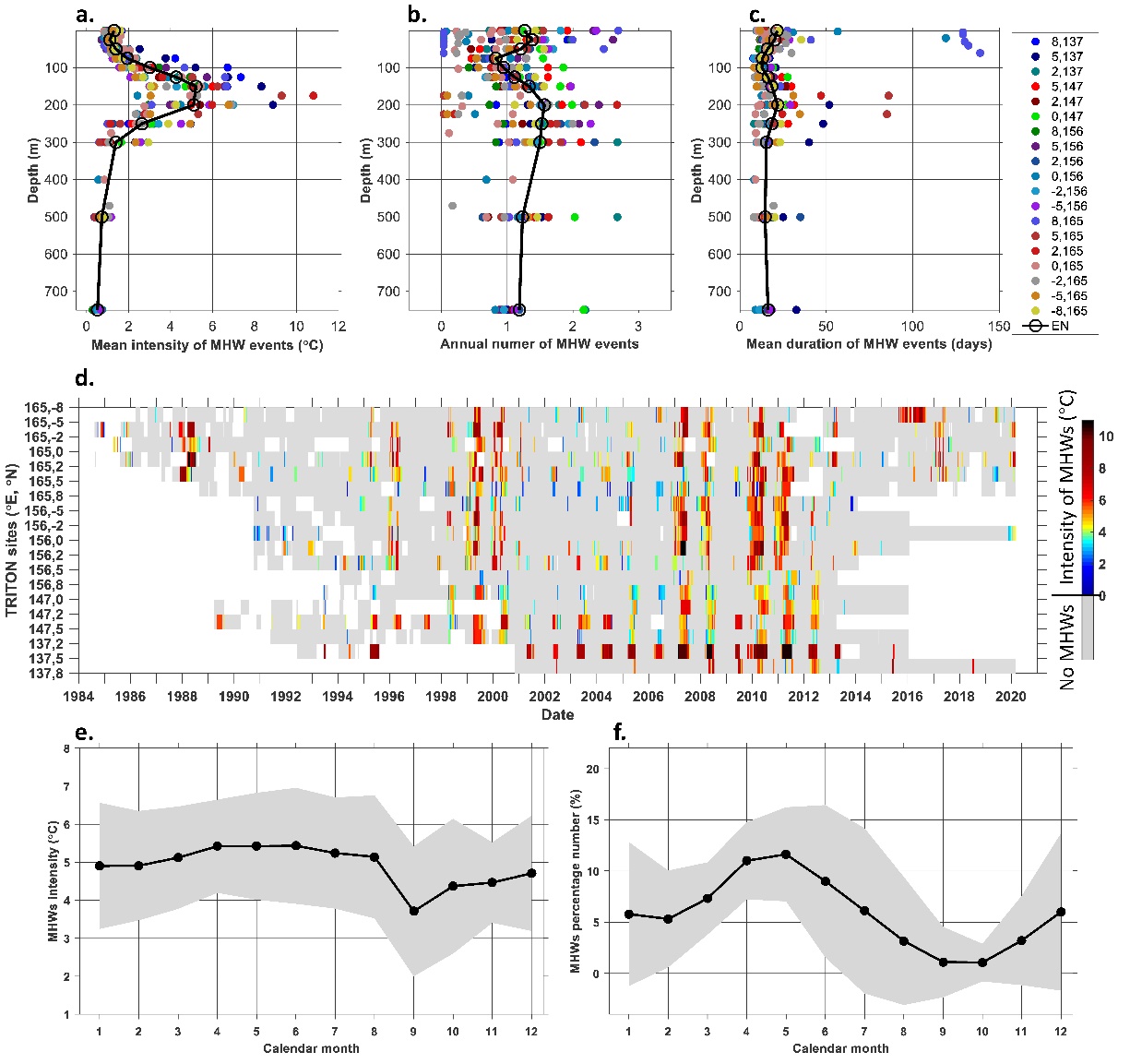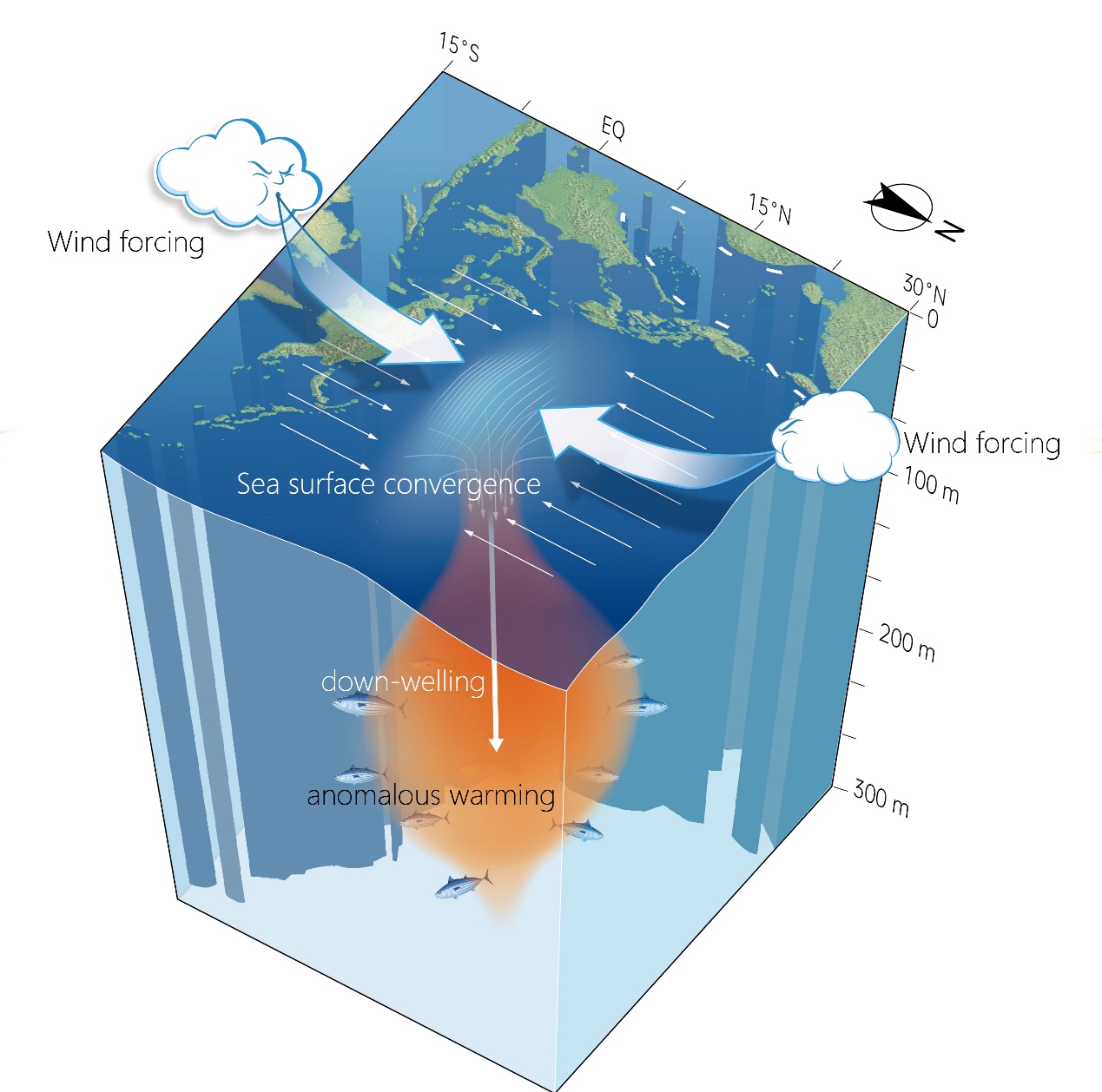Marine heatwaves (MHWs) are discrete short-term extreme warm water events, which widely occur in the global ocean and coastal waters. Given the strong destructive impacts of MHWs on marine environment and ecosystem, the research on MHWs has become an important research frontier of marine environment and climate research area in recent years.
Recently, an international team led by Prof. HU Shijian from the Institute of Oceanology of Chinese Academy of Sciences (IOCAS), for the first time, found the existence of strong subsurface MHWs in the tropical western Pacific Ocean based on long-term in situ observations.
The study was recently published in Environmental Research Letters.
Members of the research team are from IOCAS, the South China Sea Institute of Oceanology of CAS, Commonwealth Scientific and Industrial Research Organization, and Japan Agency for Marine-Earth Science and Technology. The first author HU Shijian is a member of Youth Innovation Promotion Association of Chinese Academy of Sciences.
Previous studies based on sea surface temperature show that the intensity of surface MHWs in the tropical western Pacific Ocean are less and weaker than in other parts of the global ocean.
However, by using high-temporal-resolution subsurface measurements collected by the Tropical Atmosphere Ocean/Triangle Trans-Ocean Buoy Network (TAO/TRITON) buoys, unexpected strong subsurface MHWs are found in the subsurface layer of the tropical western Pacific Ocean. "Given that they are independent of the surface MHWs, these events can be called 'subsurface MHWs'," said Prof. HU.
The results show that the ensemble mean intensity of subsurface MHWs reaches a peak of about 5.2 °C at 150 m, which is 3-6 times greater than the surface MHWs, and the maximal mean intensity in certain region reaches 8.9°C.
Subsurface MHWs occur almost every year with an ensemble mean duration of about 17 days, and show no statistically significant correlation with the El Nino-Southern Oscillation index. Subsurface MHWs have a seasonal cycle: strong and frequent in April-June but relatively weaker and less frequent in September and October than in other months.
Anomalous oceanic convergence and Ekman down-welling are suggested to play an important role in the development of subsurface MHWs. Observations show that the convergence of sea surface wind causes warm surface water convergence and sinking in the form of Ekman down-welling, resulting in extreme anomalously warming in the subsurface layer.
It's well known that the upper 300m layer is the living depth of deep-sea fish such as tuna, and the western Pacific Ocean is one of the largest tuna fishing-ground in the world. The research team examined the relationship between subsurface MHWs and tuna production of Micronesia, and found that the occurrence of extreme subsurface MHWs is likely to reduce the tuna production of the tropical western Pacific Ocean.
The discovery of subsurface MHWs in the tropical western Pacific Ocean may change the previous understanding of MHWs, and is of significance in deepening the understanding of extreme weather and climate events and their impacts on marine ecological environment.

Fig. 1 Mean intensity (a), annual number (b) and duration (c) of MHWs in the tropical western Pacific Ocean. Middle panel (d) shows the intensity of intensity of subsurface MHWs. Bottom panels present the seasonality of subsurface MHWs' intensity (e) and percentage number (f).

Fig. 2 Schematic diagram of the formation mechanism of subsurface MHWs in the tropical western Pacific Ocean
Hu, S.*, S. Li, Y. Zhang, C. Guan, Y. Du, M. Feng, K. Ando, F. Wang, A. Schiller, and D. Hu (2021), Observed strong subsurface marine heatwaves in the tropical western Pacific Ocean, Environmental Research Letters, 16(10), 104024. https://doi.org/10.1088/1748-9326/ac26f2.
HU Shijian
Institute of Oceanology
E-mail: sjhu@qdio.ac.cn
(Editor: ZHANG Yiyi)
|
|

Address: 7 Nanhai Road, Qingdao, Shandong 266071, China
Tel: 86-532-82898902 Fax: 86-532-82898612 E-mail: iocas@qdio.ac.cn


